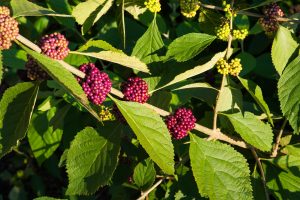Our inspiration.
 From Minneapolis to New York City to Barcelona, examples abound of cities that have undertaken successful design and restoration projects to create vital urban green spaces. New York City’s High Line is particularly inspiring to us and has served as a model for Richmond’s Low Line. All Capital Trees projects rely on public-private partnerships for development and maintenance, and this funding model has become increasingly important for financially burdened cities across the country. Public-private partnerships have been found to reduce costs for local governments, and this model develops a strong, long-term relationship between the municipality and private contributors.
From Minneapolis to New York City to Barcelona, examples abound of cities that have undertaken successful design and restoration projects to create vital urban green spaces. New York City’s High Line is particularly inspiring to us and has served as a model for Richmond’s Low Line. All Capital Trees projects rely on public-private partnerships for development and maintenance, and this funding model has become increasingly important for financially burdened cities across the country. Public-private partnerships have been found to reduce costs for local governments, and this model develops a strong, long-term relationship between the municipality and private contributors.
The power of nature.
 As horticulturalists, arborists, environmentalists, landscape designers and lovers of all things living, we at Capital Trees believe in the power of nature to transform cities and the people who live in them. And there is solid evidence to support our position — according to the World Health Organization (WHO), green spaces “represent a fundamental component of any urban ecosystem.” Not only do green spaces play a crucial role in cooling cities and improving air and water quality, they also encourage physical activity, social interaction and relaxation.
As horticulturalists, arborists, environmentalists, landscape designers and lovers of all things living, we at Capital Trees believe in the power of nature to transform cities and the people who live in them. And there is solid evidence to support our position — according to the World Health Organization (WHO), green spaces “represent a fundamental component of any urban ecosystem.” Not only do green spaces play a crucial role in cooling cities and improving air and water quality, they also encourage physical activity, social interaction and relaxation.
Green spaces also are important to mental health and cognitive fitness. New research suggests that although most people spend 93% of their waking hours indoors, even very brief periods of time outdoors can improve our moods and our ability to think. According to the Wall Street Journal, we now know that nature “acts as a sort of combined antidepressant and smart pill,” and the key is simply determining and getting the dose of nature we need each day.
At Capital Trees, we want to ensure that all Richmonders have easy access to a daily dose of nature, whether that means walking down a tree-lined street at lunchtime or spending a Saturday at the Low Line or Great Shiplock Park. Please consider making a gift to Capital Trees or joining us as a volunteer.
More inspiration.
- Park, Plants and People: Beautifying the Urban Landscape, by Lynden B. Miller
- Nonesuch Place: A History of the Richmond Landscape, by T. Tyler Potterfield
- “In Shrinking Akron, a Dead Highway Becomes a Forest,” by Laura Bliss, CITYLAB
- “Parks as Green Infrastructure: How Need, Design and Technology Are Coming Together to Make Better Cities,” by Adrian Benepe, The Nature of Cities
- “Forest Bathing: A Retreat to Nature Can Boost Immunity and Mood,” NPR.com

